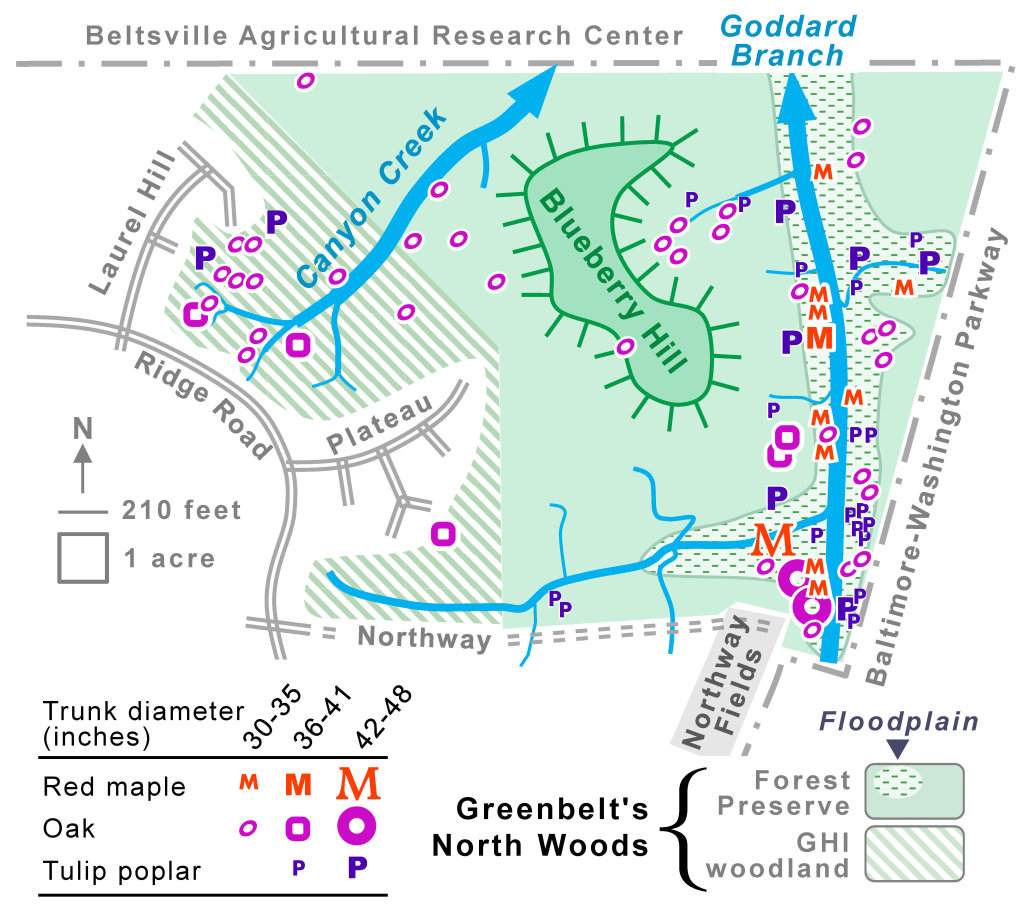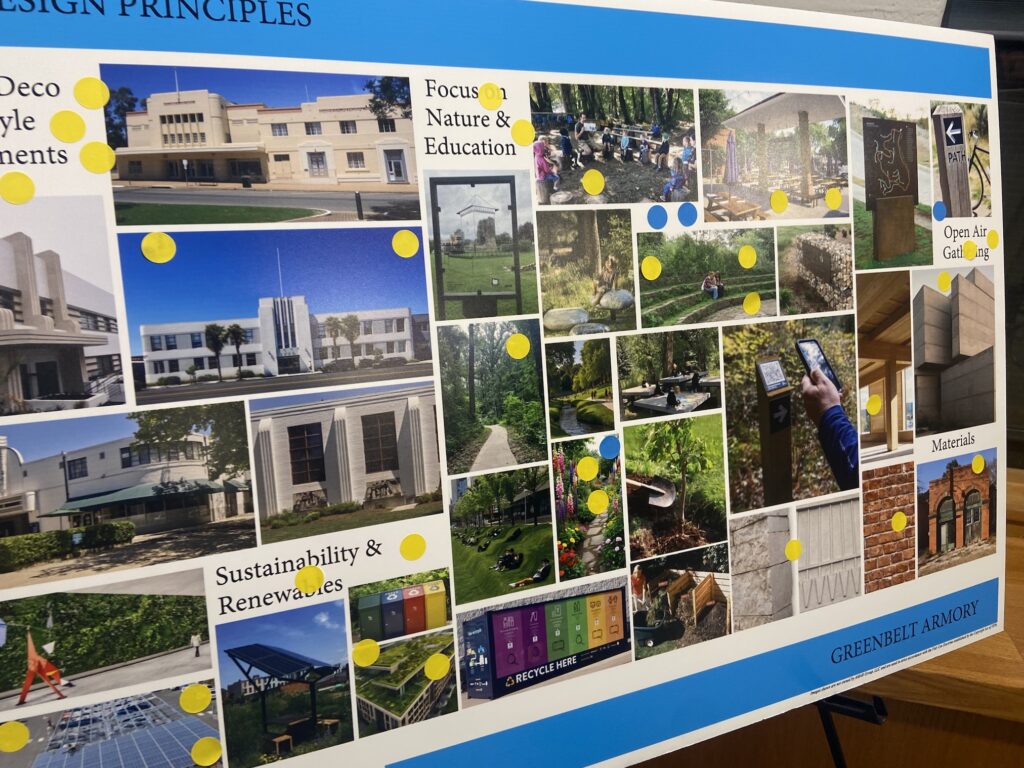Greenbelt’s North Woods contains a number of trees with particularly wide trunks and several other pieces of evidence suggesting that these trees may predate Greenbelt’s founding in 1937. While exploring the area this summer, the author located several trees of great girth. For generations, Greenbelters have affectionately referred to the forest that is located east of Ridge Road and north of Northway extended as the Great North Woods. Much of the wood’s 200 acres were declared part of a forest preserve by city council in October 2003; the rest that is south of Northway extended has been owned by Greenbelt Homes, Inc. (GHI) since 1952.
To date, no official evaluation of the North Woods has included a census of the trees whose trunks are exceptionally wide. Trunk diameter is a useful measurement because it provides a clue to a tree’s age. A large tulip poplar in the North Woods may have added an inch to its trunk’s diameter every two or three years on average, according to a 2013 report by the Maryland Department of Natural Resources (DNR). A tulip poplar with a trunk at least 36 inches across at chest height – a standard way to measure tree diameter – is likely to be at least 100 years old, plus or minus 20 years.
During the author’s walks this summer, he found 26 tulip poplars this big in the North Woods. Because oaks and red maples grow more slowly, an oak or red maple just 30 inches in diameter is likely to be 120 years old, plus or minus 20 years. The author found 52 maples and oaks of this size. Most of these old trees are This is a map of Greenbelt’s North Woods that shows the locations of trees with wide trunks. Most likely, these trees started growing before Greenbelt was founded in 1937. Only living trees with single trunks are shown on the map. (Data collection and visualization by Owen Kelley, okelley@gmu.edu.) concentrated in about 12 acres along the floodplain of a tributary of Beaverdam Creek called Goddard tributary. There are signs that the forest here has had time to become a mature ecosystem, although it is not an old growth forest. Some ecologists have found that a forest at least a century old may begin to exhibit some structural characteristics common to old-growth forests. To the author’s untrained eye, the Goddard tributary floodplain exhibits several of these: trees with a wide range of ages; standing dead trees; fallen dead trees; shade tolerant species; and trees that are older than half of their species’ expected lifespan. While much of what became Greenbelt in 1937 was farmland for centuries, nothing in the historical record contradicts the possibility that some patches of forest that existed during the farming era survive today. The two farms that included the floodplain in 1860 had one third to one half of their acreage classified as unimproved land in that year’s U.S. Agricultural Census. Such land may be either a forest or an untended meadow that is reverting back to forest. For more on this topic, click here.




